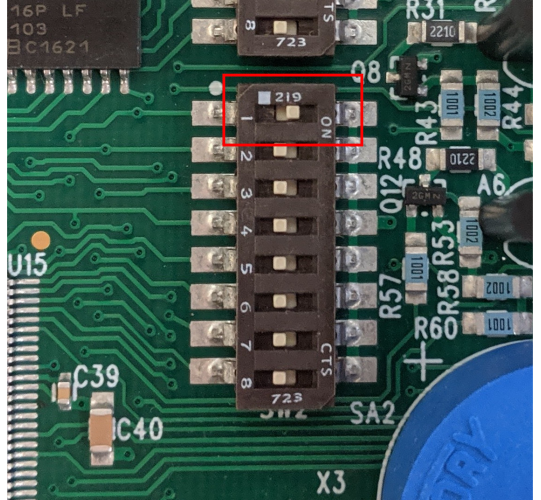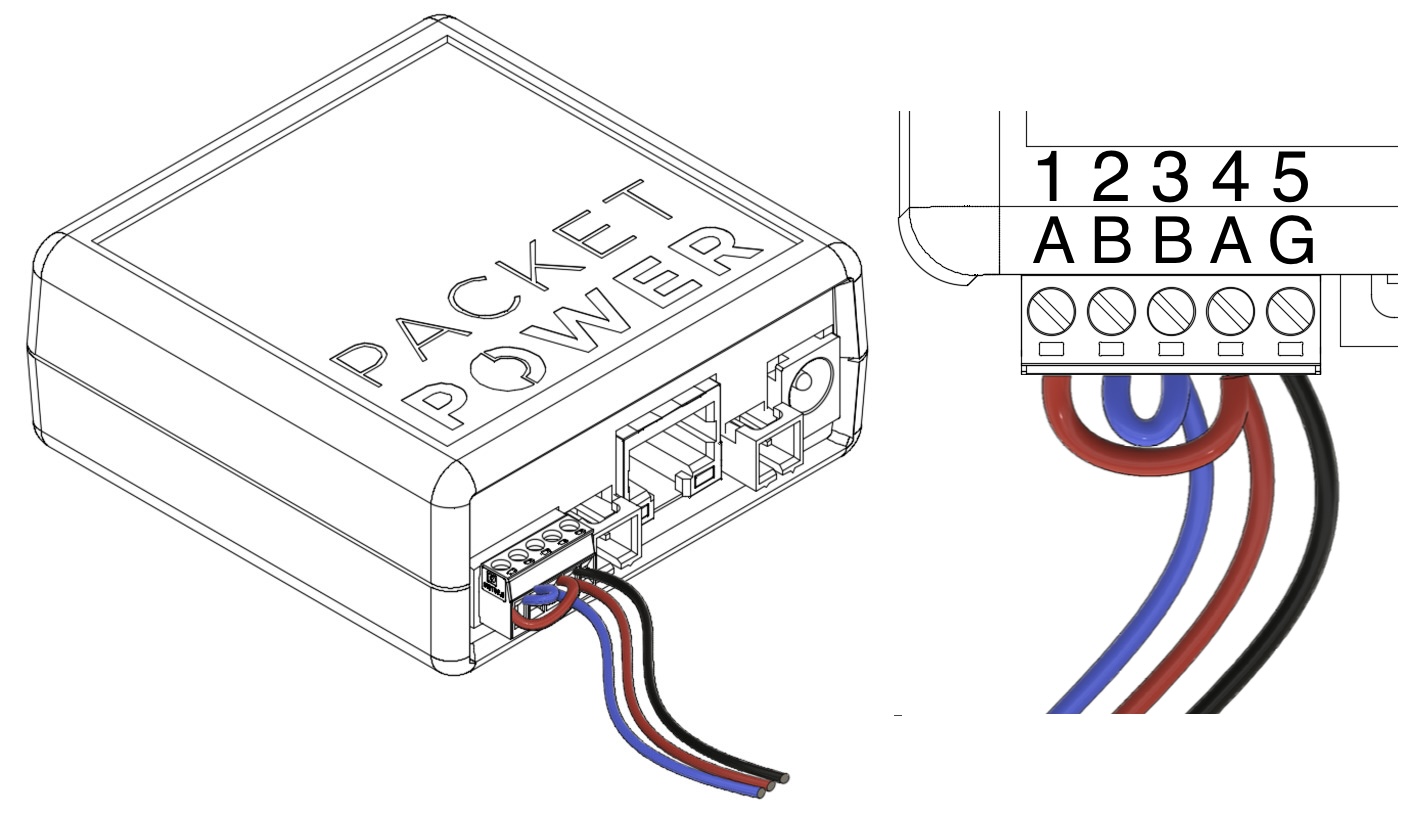Supported Devices
The Packet Power WNC supports the following models of RLE leak detection controllers
-
RLE LDRA6
-
Other RLE zone controllers with Modbus RTU capabilities may also work, specifically LD1000 (single-zone) and BMS-LD3Z (three-zone)
Required WNC Firmware
36.12 and newer
As a Modbus RTU device, the WNC must be pre-configured to connect to this third-party device. Contact support@packetpower.com to discuss configuration options.
RLE Documentation
The following RLE resources will be useful for the WNC configuration. Note, this is not a full guide to the RLE Multi-zone Leak Detection Controller interface.
Required RLE Leak Detection Controller Configuration
The device must be configured for these connection parameters.
RS-485 Comm Port Protocol: Modbus (RTU)
RS-485 Comm Port Address: 1
RS-485 Comm Port Baud Rate: 9600
RS-485 Comm Port Start Bits: 8
RS-485 Comm Port Parity: No Parity
RS-485 Comm Port Stop Bits: 1
Use the DIP switches on the circuit board labeled SW2 to set the device address to 1. This requires setting the bit labeled "1" to "ON", with the seven remaining bits set to "OFF".

By default, the device is already factory configured for 9600-8N1. This can be changed via the serial console (RS-232, 9600-8N1). Please follow the instructions in the user guide to configure the Modbus RTU RS-485 port to 9600-8N1.
If your meters are already configured for alternative address, baud rate, or parity, please contact support@packetpower.com to discuss factory-configuration options.
WNC Connections
WNC support for Modbus RTU is capable of half- or full-duplex operation. That is, it provides separate connections to the WNC RS-485 transmitter and receiver signal pairs. For a half-duplex RS-485 bus, these pairs are connected together and connected to two-conductor twisted pair wiring. For a full-duplex RS-485 bus, these pairs are kept separate and connected to four-conductor twisted-pair wiring. Typically, half-duplex is used for industrial control systems like these. The WNC hardware contains the necessary terminating resistors, as well as a ground connection for any cable shielding, if used. Contact support@packetpower.com with questions regarding proper wiring of the Modbus RTU RS-485 bus.
Connect the Modbus RTU twisted-pair cable to the RLE device using the screw terminals. Terminals are typically labeled with a "+" (plus sign) or "A" on one connection and a "-" (minus sign) or "B" on the other connection. Refer to the RLE device user guide for details on wiring for RS-485 serial communications.

On the rear of the WNC, use the green 5-pin plug to connect the Modbus RTU twisted-pair cable. Connect pins 1 and 4 together to the "A" wire in the cable. Connect pins 2 and 3 together to the "B" wire in the cable. If the cable has a shield, connect it to ground at ONLY ONE point in the modbus network. Since the WNC will act as a Modbus RTU master, pin 5 can be used to ground the cable shield.

Readings Reported
|
Modbus RTU Register Number |
Channel |
Description |
|---|---|---|
|
40001 (Status) |
Contact 6 |
Zone cables break alarm status (0 = all zone cables ok, 1 = at least one zone cable has a fault) |
|
Probe Status 6 |
Zone cables break alarm status (OPEN = all zone cables ok, FAIL = at least one zone cable has a fault) |
|
|
Contact 7 |
Zone 1 leak detection status (0 = no leak detected, 1 = zone 1 leak detected) |
|
|
Probe Status 7 |
Zone 1 leak detection status (OPEN = no leak detected, FAIL = zone 1 leak detected) |
|
|
Contact 8 |
Zone 2 leak detection status (0 = no leak detected, 1 = zone 2 leak detected) |
|
|
Probe Status 8 |
Zone 2 leak detection status (OPEN = no leak detected, FAIL = zone 2 leak detected) |
|
|
Contact 9 |
Zone 3 leak detection status (0 = no leak detected, 1 = zone 3 leak detected) |
|
|
Probe Status 9 |
Zone 3 leak detection status (OPEN = no leak detected, FAIL = zone 3 leak detected) |
|
|
Contact 10 |
Zone 4 leak detection status (0 = no leak detected, 1 = zone 4 leak detected) |
|
|
Probe Status 10 |
Zone 4 leak detection status (OPEN = no leak detected, FAIL = zone 4 leak detected) |
|
|
Contact 11 |
Zone 5 leak detection status (0 = no leak detected, 1 = zone 5 leak detected) |
|
|
Probe Status 11 |
Zone 5 leak detection status (OPEN = no leak detected, FAIL = zone 5 leak detected) |
|
|
Contact 12 |
Zone 6 leak detection status (0 = no leak detected, 1 = zone 6 leak detected) |
|
|
Probe Status 12 |
Zone 6 leak detection status (OPEN = no leak detected, FAIL = zone 6 leak detected) |
